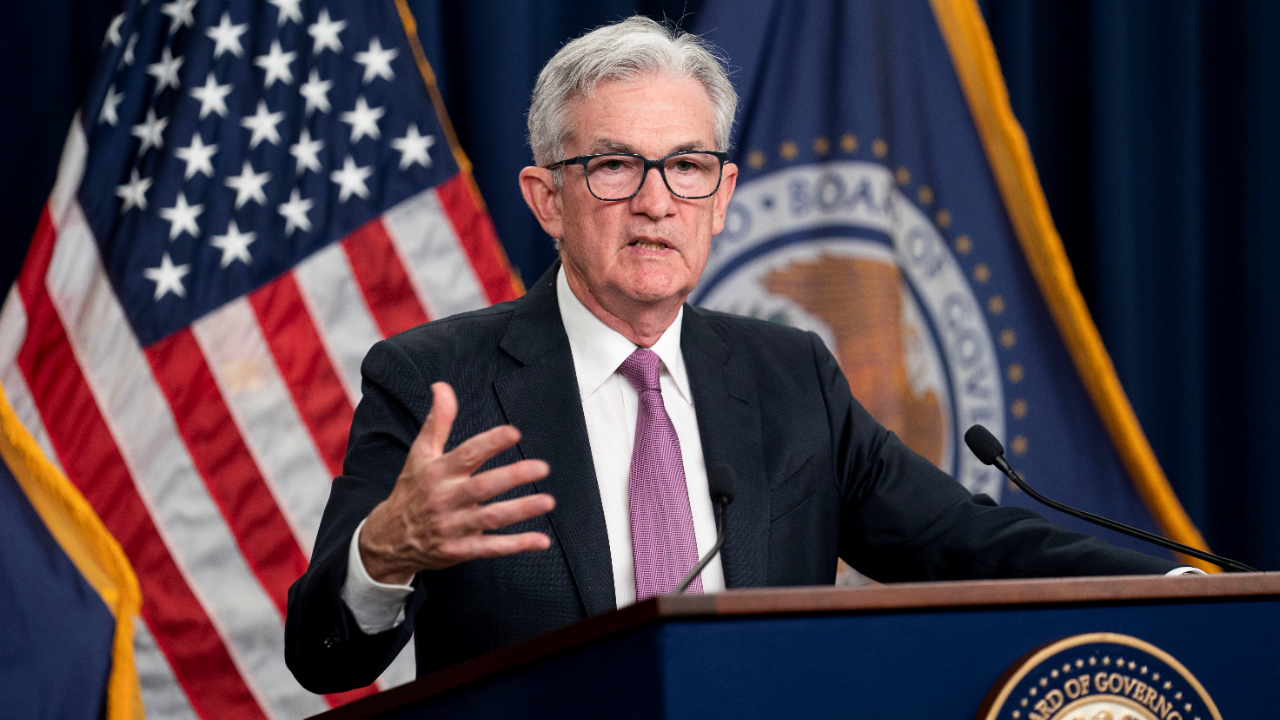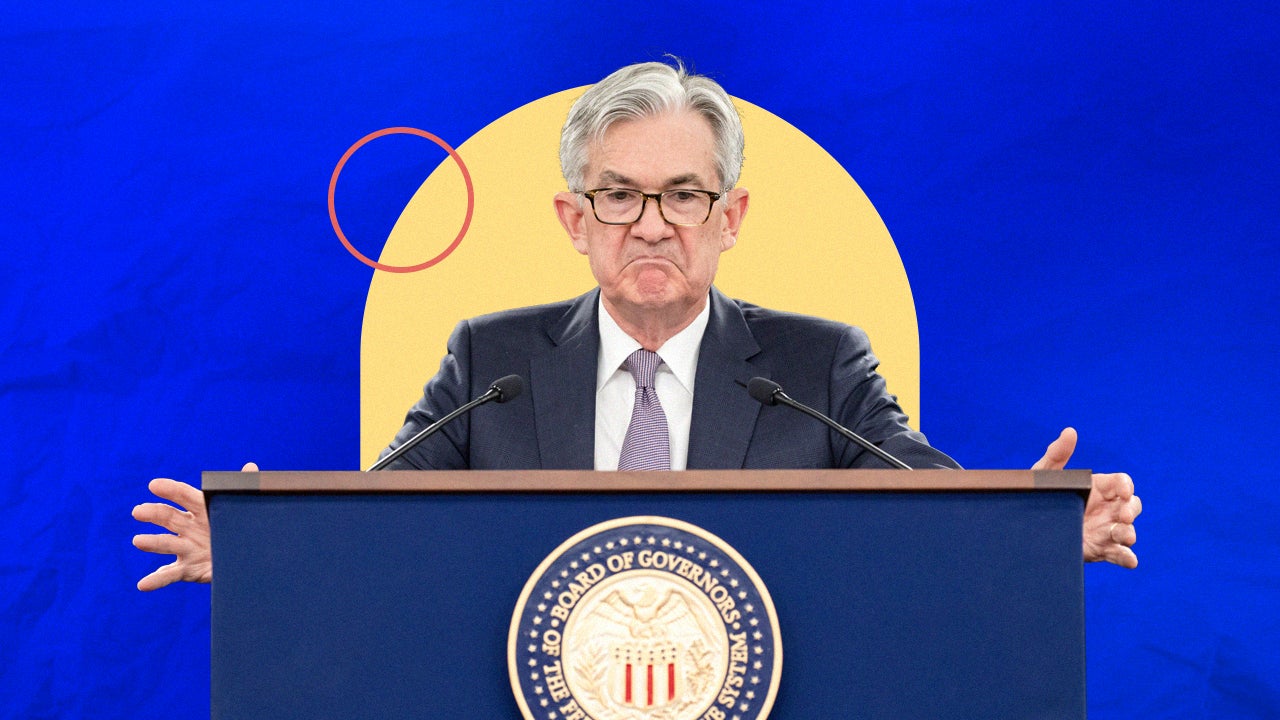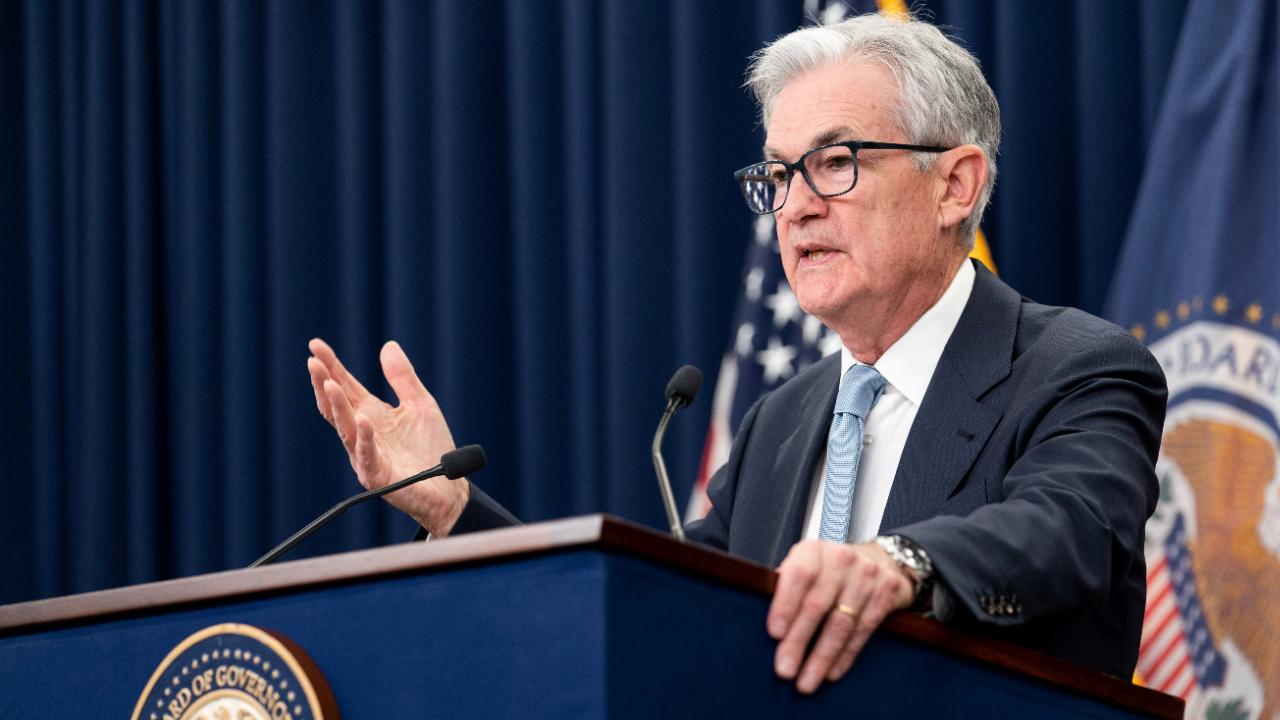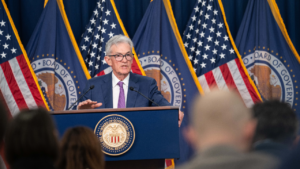Fed lifts rates by another three-quarters of a percentage point to curb runaway inflation

The Federal Reserve delivered a steep rate hike worth three-quarters of a percentage point for the third straight meeting, officially taking its key borrowing rate back to levels not seen since 2008.
The Federal Open Market Committee (FOMC) set 3-3.25 percent as the new target range for the federal funds rate. The move means the Fed’s interest rate benchmark — which drives almost all borrowing and savings products in the market, from credit cards, car loans and mortgages to savings yields and certificates of deposit (CDs) — has officially climbed 3 full percentage points in just a six-month span. Not since the 1980s have officials raised rates this much in a single year.
“Without price stability, the economy does not work for anyone,” said Fed Chair Jerome Powell at a post-meeting press conference. “If we were to fail to do that, that would be most painful for the people that we serve.”
Consumers are already feeling it in their wallets, and they’re certainly going to feel it more — in some good ways, and some bad. A boon for savers, yields have doubled, and many online accounts on the market are paying annual percentage yields (APYs) of 2 percent or more. Yet, the average 30-year fixed rate mortgage has jumped an unprecedented 3-plus percentage points since July 2021, while credit cards have soared two points.
The Fed’s latest move also takes interest rates above the level seen as officially weighing on hiring, investing and spending for the first time in more than a decade – known as the “neutral rate of interest.” For consumers, jobseekers and businesses, it marks the point when things could actually start to feel bumpy.
And the Fed isn’t done yet. In fresh projections of its rate path, policymakers signaled they expect to lift rates by another 1.25 percentage points before the year comes to a close, implying one more 75 basis point rate hike and a second half-point increase across the Fed’s two remaining meetings.
Americans are already worrying about the economic consequences of raising rates so much, side effects that could mean increased job insecurity or joblessness.
“We have got to get inflation behind us,” Powell says. “I wish there were a painless way to do that. There isn’t.”
Powell and Co. have said higher borrowing costs to cool the hottest price surge in 40 years are worth the pain, though officials are being confronted with a tough reality: Inflation is much more stubborn than anyone first thought. It raises the risk that not only do rates have to rise higher, but hold there for longer until the job is done. The Fed’s projections show at least one more rate hike in 2023.
“The Fed was late to recognize inflation, late to start raising interest rates and late to start unwinding bond purchases,” says Greg McBride, CFA, Bankrate chief financial analyst. “They’ve been playing catch-up ever since.”
The Fed’s rate hike: What it means for you
Mortgages and refinance rates
If you were lucky enough to refinance or lock in a mortgage a year ago when rates were barely above 3 percent, you’re probably thanking yourself now. The Fed’s giant rate hikes have brought an end to those record-low rates — and even the sub-5 percent mortgages that persisted in the aftermath of the financial crisis.
A year ago, a monthly payment on a $300,000 mortgage with a 3.03 percent rate would’ve cost you $1,269 in principal and interest, according to Bankrate’s mortgage calculator. Today, with the average mortgage rate hitting 6.12 percent in the week that ended on Sept. 14, the highest since 2008, it’d cost you $1,821 — a 43 percent jump. The same monthly payment a year ago would also only get you a loan of $209,000 today, reflecting a 30 percent hit to homebuyer affordability.
The Fed doesn’t directly influence mortgage rates, which more closely follow the 10-year Treasury yield, but both are influenced by the same forces. Another factor leading to the renewed surge in the price of financing a home, the Fed in September also doubled how many assets it’s letting roll off its balance sheet each month to $95 billion. Experts say the move is directly tied to the recent run-up in mortgage rates, and it’s widening the typical spread between the 10-year Treasury yield and the 30-year mortgage by nearly one extra percentage point.
There’s a chance mortgage rates might eventually break away from the Fed, especially with fears of a recession growing. But all the winds are pointing in the same direction: Higher rates are here to stay. The refinance window has already slammed shut — for now — but if you’re in the market for a home, be sure to compare offers from multiple different lenders.
Borrowers
The most important step you can take in a rising-rate environment is to pay off your high-cost credit card debt and refinance any variable-rate debts into fixed loans. Doing so limits your exposure to what’ll likely be the highest interest rates in decades, before it’s all said and done, and could potentially shave hundreds of dollars off your monthly payment as borrowing costs continue to climb.
If you have credit card debt, look into utilizing a balance transfer card. Many cards on the market offer 0 percent introductory annual percentage rates (APRs) for 12 to 21 months. Calculate the cost of transferring over your debt and see if you’d end up saving money in interest.
And as is often the case, borrowers can’t always count on timing the market. If you think you’re going to end up having to take out a loan to finance any kind of big-ticket purchase in the near future, be sure to keep an eye on your credit score, ensure your utilization rate remains low and pay all of your obligations on time. Nothing can impact the individual rate you receive more than your credit history.
Savers
After being left behind for years, savers may now have their time to shine. To be sure, the national average interest rate for savings accounts is still next to nothing, even if they’ve more than doubled from 0.06 percent before the Fed’s rate hikes started to 0.13 percent in the week that ended on Sept. 21. You’ll also be hard-pressed to find a yield higher than prices have risen over the past year since August (8.3 percent).
But the Fed’s massive amount of rate hikes in such a short amount of time means many financial institutions have no choice but to follow suit by paying more for your deposits — and you’ll find the greatest bang for your buck among online banks.
It could translate to big earnings. If you were to keep a $10,000 deposit in a bank with a 2 percent yield for a year, you’d earn $200 — a whopping 15 times more than what you’d earn at a bank paying 0.13 percent APY for your cash.
With rates likely still on the rise, you might want to wait a bit before locking your money into a CD. But remember: Liquidity is also important, especially if that money is housing the cash you’d turn to in an emergency.
Investors
Higher rates are no doubt going to test investors’ patience. The S&P 500 has struggled mightily in 2022, down about 20 percent so far this year, with recession risks and inflation fears keeping markets under pressure.
Good news has also largely been viewed as bad news. Even with the 3 percentage points of tightening this year, the labor market is overwhelmingly tight, unemployment is at near a half-century low, and employers have added hundreds of thousands of jobs each month over the past year. It’s making investors come to terms with the reality that interest rates will likely have to rise even further than here to get the kind of grip on inflation the Fed really wants.
But if you’ve invested over a longer time horizon and have a diversified portfolio, you’re likely better-positioned to stomach the bumpy ride. Stocks are more heavily discounted today than they were just last year when they were at record highs. Often, the best time to invest is when the stock market looks bleak.
What comes next for the Fed with inflation stubbornly high?
Even with all the Fed’s tightening so far, officials haven’t gotten much good news on the inflation front.
Consumer prices in August cooled only slightly to 8.3 percent from their fresh 40-year high of 9.1 percent in June, mostly thanks to falling gas prices. Food prices, however, continued to heat up, with the cost of groceries rising the most since March 1979. Even more troublesome, rent costs climbed by the most since 1986, while medical care, insurance and tuition costs also soared. Taken together, consumer prices excluding the volatile food and energy components actually ramped up in August, rising 0.6 percent from the month earlier and 6.3 percent from a year ago.
The Fed’s preferred inflation gauge of personal consumption expenditures (PCE) also leapt 6.3 percent in July from a year ago, while core PCE in the same index rose 4.6 percent over the same period. The measure differs from CPI because it weights certain components differently.
A federal funds rate at 4.25-4.5 percent by the end of the year is seen as doing little to cool that inflation in the near term, the Fed’s projections show. Officials see headline PCE at 5.4 percent in 2022, though falling to 2.8 percent in 2023 and officially hitting the Fed’s 2 percent target in 2025. Core PCE, however, is even stickier, seen as increasing 4.5 percent in 2022, 3.1 percent in 2023 and holding above the Fed’s preferred level through 2025.
Higher rates can take almost a year to a year and a half to fully filter through the economy, meaning Americans might just have to be patient. But Powell indicated some of that is because the economy is still looking robust — especially in the labor market.
The job market hasn’t slowed much since the Fed’s first rate hike in March. Job growth between June and August averaged 378,000, virtually unchanged from the prior three-month average of 384,000. Job openings, meanwhile, are still hovering at record levels and bounced back above 11 million in July, outnumbering the unemployed by almost two-to-one. Powell has called the labor market tight to an “unhealthy degree,” with demand significantly out of balance with supply.
The Fed has made it clear inflation is the No. 1 focus, but both price pressures and the labor market are what’ll likely drive officials to raise rates even more before the year comes to a close. Below-trend growth and a softer labor market is something the Fed thinks it needs to have to cool inflation, Powell said.
Officials in their projections see a 3.8 percent unemployment rate by the end of the year that could eventually peak at 4.4 percent by the end of 2023.
But Powell said the Fed is hopeful higher unemployment happens for so-called “good” economic reasons: More labor supply, rather than lost jobs. He points to job openings, which outnumber the unemployed by almost two-to-one and are still hovering at record levels after rising to 11.2 million in July. Powell has called the labor market tight to an “unhealthy degree,” with demand significantly out of balance with supply.
“No one knows if this process will lead to a recession, or if so, how significant that recession would be,” Powell said. “We’ve just moved, I think, probably into the very lowest level of what might be restrictive.”
Officials expect to lift rates to a target range of 4.5-4.75 percent in 2023, then gradually settle back down toward neutral with rate cuts in 2024 and beyond. Yet, it might take some time for consumers — and the Fed itself — to see the progress they’d like on inflation.
“We’ve just barely crossed into restrictive monetary policy,” says Steve Rick, chief economist at CUNA Mutual Group. “Their foot this morning was on the floorboard and their car was coasting. But this afternoon they just started gently pressing on the brakes. Just because you raise interest rates today doesn’t mean the economy starts slowing today.”
You may also like

Hot inflation is squeezing lower-income households’ emergency funds





